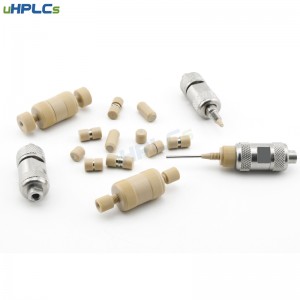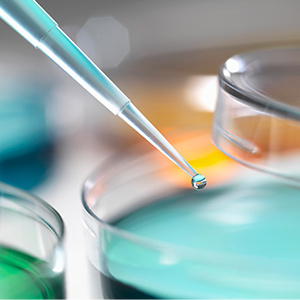If the sample is not filtered before the experiment, the sieve plate of the column will be blocked and other problems, which will lead to the increase of back pressure and the degradation of the column performance.Ultimately, this will increase the time spent on troubleshooting and maintenance of the chromatograph, waste time and increase the workload of researchers.
For most types of samples, the filtration process is relatively simple. Filter the mobile phase with a solvent inlet filter before injection.This step is also very important, with the chromatographic filter head can effectively filter the mobile phase of solid particles impurities; Unfiltered solvents or microorganisms growing in solvent bottles can degrade the performance of liquid chromatography columns and pumps.The solvent inlet filter should be cleaned or replaced periodically after a period of use.
In the analysis of the food and beverage industry, some samples such as thick syrups, fruit juices and fats that are sticky or contain high levels of particulate matter are difficult to filter. And if your sample contains ingredients such as corn starch, syrup, soy, sucrose, or fruit additives, using a standard syringe filter can be a challenge.
What should be paid attention to when filtering viscous samples? When the viscous sample is pushed through the syringe filter by hand, it needs to be pushed hard by hand, and multiple syringes are needed to reduce the efficiency. Pump pressure may need to be increased due to glass clogging; Analysis is prone to shoulder peak or split chromatographic peak and so on.
How to filter viscous samples more effectively?
A needle filter with a pre filter stack consisting of microfibers can be used to intercept and capture larger particles before they reach the filter with a specified aperture. This can handle lengthy sample volumes with high efficiency.
It is also important to select filters with the correct chemical compatibility. For example, the use of hydrophobic materials for aqueous samples can lead to the accumulation of back pressure. Selecting the wrong membrane can lead to other performance problems.
uHPLCs summarized the following points for attention in the preparation of HPLC and UHPLC samples for your reference:
It is best to apply even and moderate pressure to the syringe to ensure a consistent sample. If back pressure starts to produce significant resistance, check your filter for problems.If you encounter an increase in filtration back pressure, membrane blockage, or a decline in column performance due to unfiltered particles entering the injector, consider using a pre filtration stack. The degradation of chromatographic column performance is a key concern, and ordinary maintenance also needs attention.Adding a protective column in front of the column is equivalent to adding an additional section of filler in front of the chromatographic column, which plays a role in protecting the whole chromatographic column. If you are concerned that the increase of chromatographic protective column may cause the increase of dead volume, you can use the constant spectrum direct connection protective column sleeve, which can be directly connected with the inlet of chromatographic column. Hand tight direct connection does not need other connecting pipelines, and can also achieve excellent chromatographic performance without increasing dead volume.
If there is strong resistance when using the syringe, do not force the sample through. Doing so may lead to unnecessary problems and even filter leakage.
When you have a large number of samples, do not automatically select narrow diameter filters. Please select a diameter suitable for the volume.
Post time: Apr-07-2022








